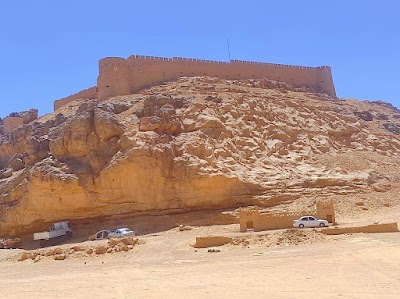Ghat Traditional House (البيت التقليدي في غات)
Overview
Nestled in the breathtaking expanse of Libya's Ghat District, the **Ghat Traditional House** stands as a testament to the rich cultural tapestry and historical significance of the region. This charming abode, echoing with the whispers of yesteryears, offers foreign tourists an intimate glimpse into the traditional **Berber way of life** that has flourished in this part of the Sahara for centuries.
The **Ghat District**, bordered by the majestic **Tassili n'Ajjer** mountain range and the sprawling sands of the Sahara, has been a crossroads of civilizations for millennia. The Ghat Traditional House serves as a microcosm of this historical confluence. Built with earthen materials, the house features thick, mud-brick walls that insulate against the harsh desert climate, keeping the interior cool during scorching days and warm during frigid nights. This architecture showcases the ingenuity of ancient builders who mastered the art of sustainable living long before modern green standards were envisioned.
Stepping into the Ghat Traditional House feels like a journey back in time. The interior is adorned with **colorful, hand-woven rugs** and tapestries that tell the stories of the **Tuareg people**, the semi-nomadic Berbers who have inhabited the Sahara for centuries. The walls, often decorated with intricate geometric patterns painted with natural dyes extracted from local plants and minerals, offer both beauty and meaning. These designs are not merely decorative; they hold symbolic significance and are believed to offer protection and blessings to the inhabitants.
One of the most striking features of the Ghat Traditional House is its **central courtyard**, an oasis of tranquility amidst the arid landscape. Shaded by palms and often adorned with a small fountain, this communal space serves as a venue for family gatherings, leisurely meals, and moments of quiet reflection. The layout of the house, with rooms arranged around this central area, reflects the **communal ethos** of Berber society, emphasizing family bonds and social cohesion.
The historical significance of the Ghat Traditional House extends beyond its architecture. Ghat itself has been a vital trading post on the **trans-Saharan caravan routes**, connecting sub-Saharan Africa with the Mediterranean world. Traditionally, houses like this one served as quarters for traders and explorers who contributed to a vibrant exchange of goods, ideas, and cultures. Each nook and cranny has witnessed countless tales of adventure, commerce, and cultural exchange, transforming it into a living museum of the region's storied past.
For foreign tourists, visiting the Ghat Traditional House offers more than just a visual feast; it is an **immersive educational experience**. Many local guides, often descendants of the original builders, provide tours that delve into the historical context and cultural nuances of the house. Visitors can learn about ancient building techniques, traditional Berber customs, and the significance of the Ghat District in the broader tapestry of African and Mediterranean history. These guided tours typically conclude with a traditional tea ceremony, where guests are treated to the renowned hospitality of the Berbers.
Beyond its historical and cultural allure, the Ghat Traditional House provides insights into **sustainable living practices** that are increasingly relevant today. The use of locally sourced materials, the natural insulation properties of mud bricks, and the communal living spaces offer valuable lessons in ecological and social sustainability. In a world grappling with environmental and social challenges, these traditional houses stand as beacons of wisdom from a time when humanity lived in greater harmony with nature.
In recent years, efforts have been made to preserve these traditional houses, recognizing their **architectural, cultural, and historical value**. Preservation projects often involve the local community, ensuring that the skills and knowledge necessary to maintain these structures are passed down through generations. This initiative not only helps preserve the physical houses but also ensures the survival of the cultural heritage they embody.
In conclusion, the Ghat Traditional House is more than just a building; it is a portal to the past, a symbol of cultural resilience, and a beacon of sustainable living. For foreign tourists, it offers a unique opportunity to experience the rich heritage of the Ghat District, to learn about the ingenious ways ancient societies adapted to their environment, and to appreciate the beauty and depth of **Berber culture**. A visit to this traditional house is bound to leave an indelible impression, enriching one's understanding of Libya's historical and cultural landscape.



